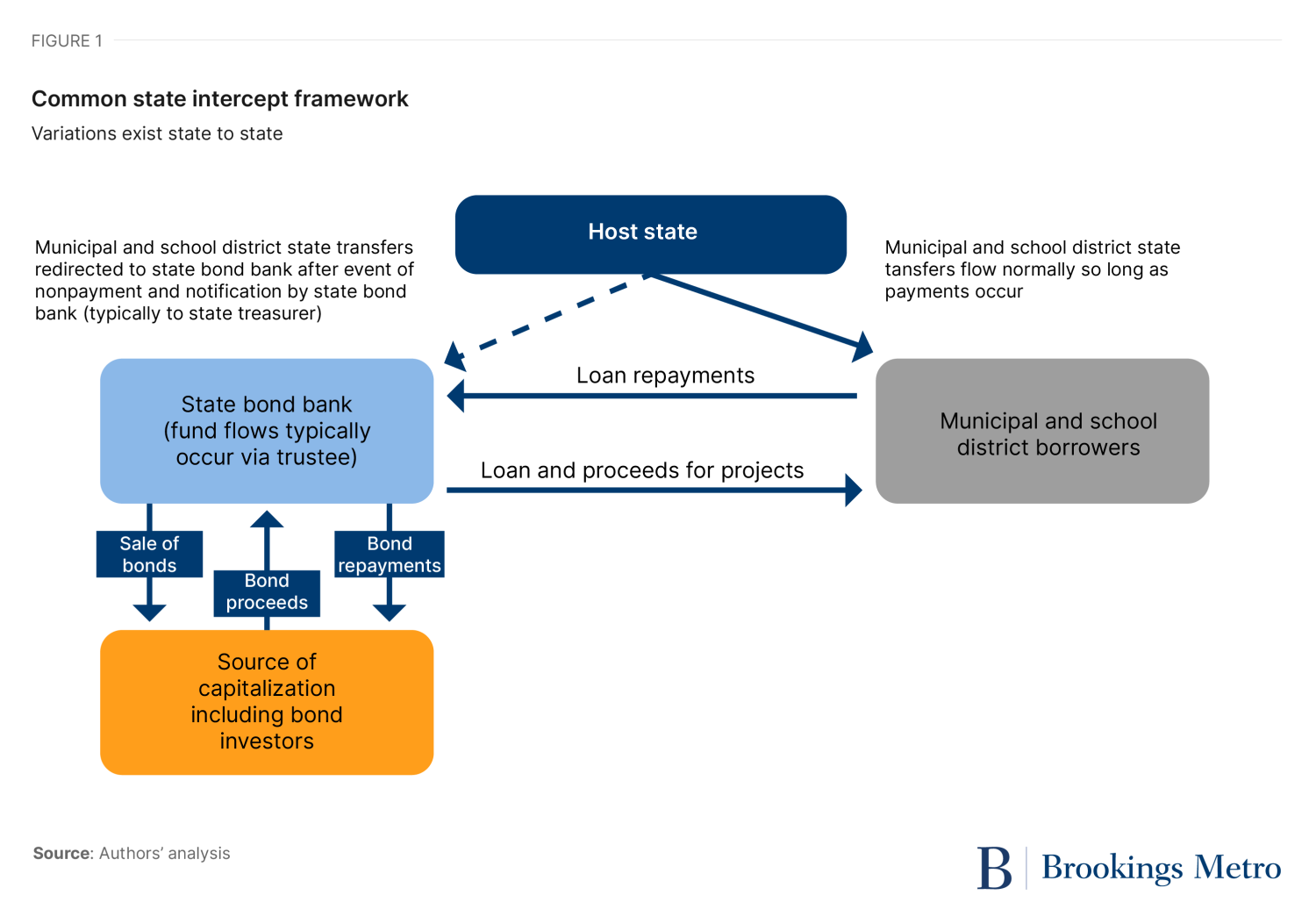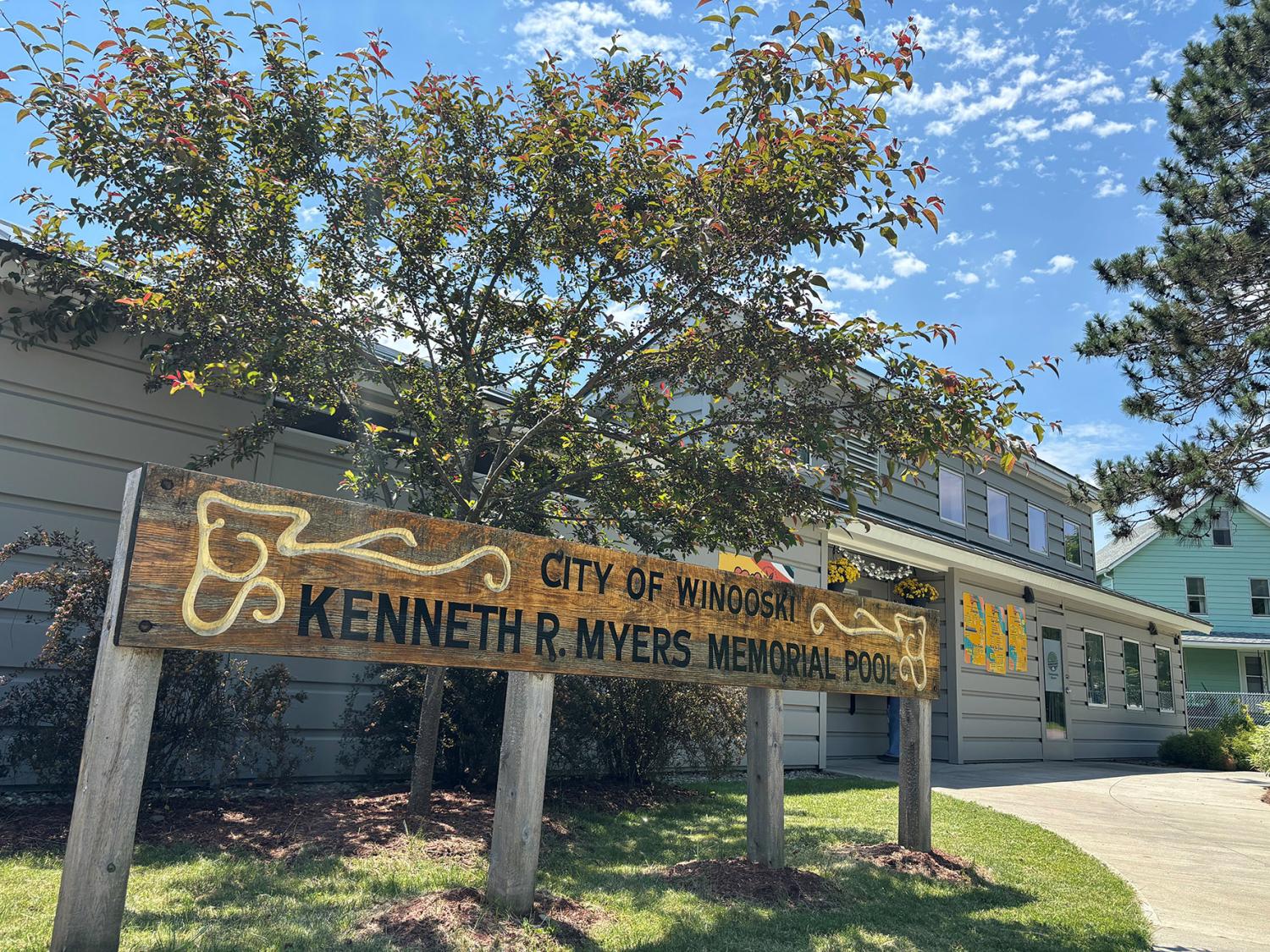It’s been a historic few years for federal investment in American infrastructure and the built environment. The combined heft of the Infrastructure Investment and Jobs Act (IIJA), Inflation Reduction Act (IRA), and the capital-eligible parts of the American Rescue Plan Act (ARPA) will commit well over a trillion dollars in federal government contributions to the physical reconstruction and modernization of America.
Yet, with all the big news out of federal Washington, it’s easy to lose sight of who does most of the investing in American infrastructure and other fixed assets owned by the public: states and localities. The IIJA, for example, is likely to average about $170 billion in spending per year across all its programs. This compares with $300 billion in new infrastructure spending financed by the $4 trillion municipal bond market in 2023 alone.
Since the bulk of the IIJA and IRA move through either established state formula programs or private industry, both laws also fail to reach every community or qualify many of their non-traditional infrastructure assets for investment, such as renovated schools and recreation facilities. Even after ARPA’s local investment programs—of which most of the dollars are now committed—the unmet needs are still substantial. Aging schools alone are estimated to need $85 billion of investment annually.
As federal policymakers begin the long work of considering what’s next in infrastructure policy, they would be wise to strengthen one of America’s best-kept secrets in infrastructure policy: the humble and highly effective state bond bank. (Disclosure: One of the authors serves as Executive Director and Secretary of the Vermont Bond Bank, a position he has held since 2018.)
Unlike most federal infrastructure programs that target one infrastructure sector at a time, state bond banks provide a locally responsive tool through which federal dollars can be leveraged and channeled to all types of projects that are of high priority to the public. First created by the State of Vermont in 1969, a state bond bank (or bond bank throughout this brief) helps make social and physical infrastructure more affordable by providing access to low-cost capital for every community within a state. Bond banks further reduce the opportunity costs of investment by providing consistency in process and market specialization for any type of project, making them different than other state lending entities such as state revolving loan funds (SRF) for drinking water and clean water infrastructure.
Today, active state bond banks (or a form thereof) exist in an estimated 13 states—which is far too little reach for one of America’s most powerful tools to leverage private infrastructure capital for communities and projects of all sizes.1,2 To remedy this gap, the federal government should create a one-time $25 billion national block grant to incentivize the creation and growth of bond banks. Such a program would ensure the efficient leveraging of a one-time federal appropriation while also creating a durable path for helping rural areas, small urban municipalities, and other underserved places overcome longstanding investment gaps.
What is a state bond bank?
State bond banks are instrumentalities of states that help local governments and independent government units such as school boards access capital at a low cost. State bond banks typically operate with independence from the sponsoring state, even though they are publicly owned.
State bond banks help overcome gaps in information, scale, and credit to allow cities, towns, villages, school districts, and other forms of government achieve equitable access to capital. Traditionally, bond bank staff achieve these goals by pooling loans from around the state together into one security structure that stands behind tax-exempt bonds issued in the larger capital markets. The proceeds from the bank’s bond sale are then used to make loans for a wide range of local priorities from recreational paths to gravel pits.
These bonds are not pass-through transactions, or conduit bonds, and are held on the balance sheet of the state bond bank alongside the ultimate responsibility for repayment. More recently, state bond banks are fulfilling their missions by using the above structure with new sources of capitalization, like those in the Inflation Reduction Act (IRA).
Historically, state bond banks succeeded in rural America where the size of capital needs is a mismatch with the scale required for local entities to access the capital markets effectively. The Vermont experience is illustrative. The median size community in the state is only 1,800 people while, over the last several years, the median size loan issued by the Vermont Bond Bank was $1 million. That’s far too small an amount to efficiently access the bond markets, which limits investors and can drive up both risk and costs for communities.
States typically offer credit enhancement as well, most commonly through an intercept (or offset) mechanism whereby dollars due to local communities are redirected to local debt service payments in the event of nonpayment. Like any lender, bond banks review loans for creditworthiness and undertake a portfolio management program, including cash management and ongoing credit monitoring. State bond banks and related borrowers then use standardized loan documents and related forms to help minimize transaction costs.

In the end, state bond banks make borrowing cheaper and serve as a trusted “banker” to every community in a state.
Why state bond banks are a missing piece of American infrastructure policy
Fundamentally, bond banks give municipalities and school districts of all sizes a reliable, efficient, and affordable pathway to accessing capital markets. Yet, bond banks are powerful governance units in their own right; they are able to quarterback a complex infrastructure landscape and their unique capabilities can help advance many of the country’s long-term infrastructure goals.
Deliver federal resources faster – All the new programs and funding opportunities within the IIJA and IRA increased the strain on local governments’ ability to access federal funds and deliver projects. State bond banks can help localities cover their match from non-federal sources, while their capital markets expertise and knowledge-sharing functions can help ensure no community is left behind due to information gaps or limited fiscal resources. In the process, bond banks’ ability to quickly allocate capital can help federal officials see their awards more quickly transform into construction sites.
Make borrowing for infrastructure and other capital assets more equitable – Inherent in the bond bank structure is the ability to provide access to low-cost capital for the largest and smallest communities alike, through both the strength of the pooled structure of loans (i.e. diversification) and the state credit enhancement.3 Unlike existing federal programs, the financial assistance provided through bond bank loans follow borrowers to the projects that matter most and are not siloed to water or transportation.
Overall, 81% of the nearly 37,000 entities in the $4 trillion municipal bond market accounts for only 10% of total debt outstanding.4 The flip side of this dynamic is that market participants understandably specialize in accommodating the fewer and larger issuers of municipal bonds, which means greater market acceptance and comparatively lower rates. Meanwhile, the overwhelming majority of users of the municipal bond market are either infrequent users or too small to capture the attention of the market. In both cases, inefficient capital access may result.
Bond banks overcome deficiencies in scale by aggregating loans and splitting issuance costs across the larger deal size. The bottom-line result is a low cost of borrowing for users, which ultimately means lower long-term tax bills in rural and urban areas with a history of underinvestment.
Remove information barriers to accessing financing at the local level – As highlighted in the Government Finance Officers Association (GFOA) report, “Employment Landscape of the State and Local Public Finance Workforce,” local government is not spared labor shortage trends seen nationally. As discussed in the report, nearly a third of all current state and local public finance workers will retire within the next ten years. From “original issue premium” to “EMMA” (i.e. Electronic Municipal Market Access), the language, customs, and practice of the municipal market are unique even for experienced finance professionals from outside the governmental sector.
State bond banks can help overcome the knowledge deficits that can present barriers to capital for governments by lending market expertise, engaging qualified professionals, and monitoring bonds for refunding savings. The result is a plug-and-play process for local government participants.
Facilitate reporting and compliance requirements – The requirements around municipal securities disclosure are complex. Notable recent developments include “other financial obligations” in response to updated SEC 15c2-12 rules and, more recently, the emerging requirements of the Financial Data Transparency Act. Borrowers without regular interaction in the municipal market may not understand the seriousness of these disclosure requirements; the Securities and Exchange Commission stands on the other side via the investment banking firms and the consequences for misstatements can involve penalties and, potentially, limits to market access.
In contrast, bond banks allow consolidated compliance reporting and disclosure with ongoing portfolio monitoring that is sensitive to on-the-ground conditions, such as a dearth of third-party government auditors. This point, as well as the liquidity benefits of bond banks, was recently highlighted by former Director of the Office of State and Local Finance at the U.S. Department of the Treasury, Kent Hiteshew, and his research partner at the Federal Reserve Bank of Chicago, Ivan Ivanov.
Navigate the hazards of climate change – Bond banks allow regional or statewide diversification in the underlying pool of loans to mitigate the downside risks of environmental events on the financial sustainability of the overall lending portfolio. This financial resilience translates to predictable market access and borrowing rates even after significant events. Moreover, the use of credit enhancement for the larger pool can help disproportionately impacted communities with low-cost market access to rebuild or adapt to the impacts of climate change. The Vermont Bond Bank’s Municipal Climate Resilience Fund is an example of a low-cost approach to post disaster rebuilding, while the Virginia Resource Authority’s Resilient Virginia Revolving Fund is an example of a bond bank participating in adaptation financing. Both programs involved substantial partnerships with the sponsoring state and exemplify key tenets of Standard and Poor’s analysis of how it evaluates the credit impact of physical climate risk on local governments. Critically, these features can make state bond banks a complement to green banks, or, in effect, a green bank for municipal and school district energy projects, because of their lending history and specialization.
How can federal policy help and what should states do?
The good news for extending the reach of state bond banks is that existing policy models are easy to identify. On the federal level, a useful example of policy that could advance state bond banks is found in the recently announced $14 billion National Clean Investment Fund (NCIF) awards as part of the larger $27 billion Greenhouse Gas Reduction Fund. This program will award capitalization grants to three national nonprofit lenders who will subsequently leverage the dollars through a network of lenders—including bond banks.
What the NCIF promises is a model to leverage one-time dollars to lower local infrastructure costs in perpetuity while creating meaningful financial leverage. State bond banks are well-suited to help mobilize public capital, ready to use their decades of experience in municipal securities to efficiently leverage NCIF investments to secure low-cost dollars for deserving projects like converting Vermont’s many rural schools away from heating oil. However, since the NCIF can only support projects that reduce greenhouse gas emissions in qualifying locations, the program does not fully tap all the eligible infrastructure and other fixed capital investments that state bond banks can support.
Nor does the NCIF address more structural threats to localities tapping the power of America’s municipal debt markets. The costs of participating in the municipal bond market are under evaluation by many traditional market makers, with the potential for negative consequences. Both Citigroup and UBS recently exited the municipal bond market. This has the potential to negatively impact the cost of capital for units of government (particularly during times of market disruption) as less capital is focused on the municipal market. In contrast, state bond banks typically have larger transaction sizes than any single municipality, helping to address the preferences among potential investors.
To grow infrastructure investments in many of America’s rural towns and fiscally-constrained communities, the federal government should create and fund a one-time national block grant to incentivize the creation and growth of bond banks. The program could be relatively straightforward:
- Congress would authorize a program within an established agency—likely the U.S. Treasury Department—to distribute grant funds to qualifying state bond banks. The legislation would include a one-time appropriation, with the program automatically sunsetting within a few months of agency staff appropriating all dollars.
- Congress would also outline the formulas for each state to receive its federal distribution, with potential consideration of total population, rural population, and other demographic variables. The formulas should translate into supporting communities in need: particularly rural communities, small urban municipalities, and other independent governance units which face challenges accessing market financing.
- Congress would provide a set time for those states without a current bond bank to establish one (ideally within two years) and commit to some form of credit enhancement, like a state intercept, that would stretch the impact of the one-time dollars. This would also provide space for Congress to define what qualifies as a bond bank, including consideration of what other state-chartered financing institutions like infrastructure banks could qualify. Critical to the capitalization working, though, is ensuring the federal dollars flow to an entity that prioritizes bundling projects for targeted communities and facilitating access to private investors.
- We recommend Congress appropriate $25 billion to the Treasury for total distribution. Irrespective of the exact formulas adopted, this figure would provide enough financing capacity to reach priority entities in every state and ensure decades of improved infrastructure delivery as the initial funds are constantly recapitalized. It’s also significantly smaller than total annual federal appropriations to grant programs such as the Community Development Block Grant (CDBG) and Surface Transportation Block Grant programs, which also help construct state and local infrastructure.
These are the broad contours of the new program, but legislation can also provide opportunities for tweaking more discreet policies, to help create more efficient overall securitization at the state and local level.
For example, the GFOA and industry groups have proposed expanding the bank qualified limit, now called the Small Issuer Exemption, from the $10 million (established in 1986) to a more modern $30 million. This exemption gives banks tax incentives to purchase municipal bonds and, as a result, offers lower rates to borrowers. Raising the limit proposal was included in Build Back Better and builds on the temporary exemption during the American Recovery and Reinvestment Act (ARRA) era. Included in the ARRA-related expansion was a provision extending the bank qualification to pooled loan structures like those used by state bond banks. This policy change could result in even lower costs for borrowers using bond banks because they would benefit from larger transaction sizes without losing the advantageous pricing offered by private banks.
As mentioned, this federal legislative opportunity could use the block grant to entice more states to create or modify the state intercepts, which already exist in about half of states. However, 10 of those states would need to expand the authorization beyond schools to also include other units of government. These would be in addition to the existing 13 bond banks that are known to be authorized. As described above, a state intercept is a powerful form of credit enhancement and has the impact of largely homogenizing the credit quality of loans made by bond banks based on the sponsoring state’s credit rating.
Unlike state matches to SRFs or special purpose state loan funds, this credit enhancement comes at a low cost for sponsoring states but not every unit of government may have dollars to offset. For this reason, a federal program to capitalize bond banks through block grants or deeply subordinate low-cost loans is needed to ensure high-quality financial structures that would lower costs. Otherwise, states are faced with politically challenging choices appropriating scarce dollars to state bond banks, requiring borrowers to finance required reserves, and/or supporting bond banks with additional credit enhancement.
A prior assumption in the above policy recommendation, however, is continued access to tax exempt rates for state and local borrowers. The block grant would be most effective in this regard, by supporting debt structures that are acceptable to the market and rated highly. What it would not do is provide sufficient subsidy to overcome any loss of tax-exemption.
Let Every State Grow Its Winooski
The City of Winooski, Vt., is a Vermont story, but it is also an American story of immigration and resolve. It sits directly north of the City of Burlington but is a fraction of the size with only eight thousand people. Starting in the early 19th century, the area attracted scores of French Canadians that were attracted to the river town’s mills in sufficient numbers that the area was dubbed “Little Canada.” The area continued a tradition of welcoming immigrants through the 20th century and today.
The current foreign-born population accounts for 14% of the total (versus 4% for the state). This bright spot of immigrant empowerment within the Vermont landscape is not without its challenges, and poverty within Winooski is among the highest in the state at 19% (versus 10% in the state). Despite relatively lower levels of community wealth, the city has embarked on an ambitious capital improvement plan over the last several years to address deferred maintenance.
Included in this plan was a reconstruction of the Meyers Pool, which closed in 2016 due to extensive repair needs. The city turned to the Vermont Bond Bank to secure the equivalent of a “AA+” cost of capital for the $3.4 million loan to the city that was unrated at the time. This led to both interest savings and the virtual elimination of fixed transaction fees that were absorbed by the bond bank. Additionally, the bond bank’s understanding of and access to municipal securities markets ensured that the cost of capital was fixed for the twenty-year term at 2.78%.
The reopened pool has become an essential community asset after its second season by providing a cool place for increasingly hot Vermont summers. Through Vermont’s state bond bank, this small city has found its infrastructure grit by ensuring access to capital for its long-range plans.

Conclusion
A national policy for the development, capitalization, and support of state bond banks would allow communities of all sizes to find the resolve demonstrated in Winooski, across much of Vermont, and many other states and communities who have turned to bond banks to actualize their infrastructure visions. As federal Washington continues to test and iterate with physical investment policies, a one-time capitalization of state bond banks is an idea worth testing and evaluating.
-
Footnotes
- Feldman, Michael. Harvard Journal of Law and Public Policy, “The Optimal Bond Bank,” 1986.
- State bond banks may exist on paper only or have changed names; does not include clean and drinking water state revolving loan funds; active state bond banks exist in Alaska, Arizona, California, Illinois, Indiana, Maine, Maryland, New Hampshire, New York, North Dakota, Oregon, Vermont, and Virginia
- Investors often look through to the state credit enhancement via the intercept to lower borrowing costs.
- Data provided by Municipal Market Analytics, Inc.




